Comparative Study of Religion
An informed and scholarly study of religion requires a comparative and interdisciplinary approach. In this department, religion is addressed in all its forms and appearances. Historians, anthropologists, sociologists and psychologists are working together to critically investigate religion as a cultural factor that is so influential in the modern world. Our expertise covers method and theory in the study of religion, the changing faces of religion in a global perspective, as well as the historical dimension of current religious discourses. Of particular importance for our research and teaching is the critical analysis of constructions of “Eastern” and “Western” forms of religion.
Below you will find a description of the current PhD research that takes place.
Bismark Agyapong
Ritual Practices of Exorcism: Understanding the Practice of Exorcism in the Akan Pentecostal Context
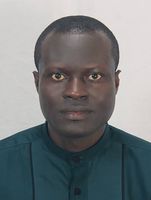
Exorcism is a common social phenomenon observed among the Akan people of Ghana. Beliefs about exorcistic practices have huge influences in the religious life of these people. Nowadays, exorcistic practices have predominant liturgical activity among Pentecostal Christians living in the Akan communities. Yet, the shared beliefs about exorcism among these Pentecostals are not adequately engaged contextually and theologically. Recent scholarships have shown unprecedented interests in the study of exorcism, yet little empirical researches have been done on exorcism among Pentecostals, particularly, with references to the Akan cosmology, or if you will, social world. Thus, there is paucity of knowledge about the “espoused theology” and the ontological social beliefs these Pentecostals often share within their own experiences particularly in the light of scholarly engagements.
The objectives of this research are in these categories: (1) To compare and contrast views about exorcism held by Akan traditionalists and Pentecostal Christians with reference to the Akan cosmology (2) To find out how these Pentecostals ground their theologies of exorcism in biblical narratives, and what these contribute in the discourse of conversion experiences for victims of spirit possession among the Akan people.

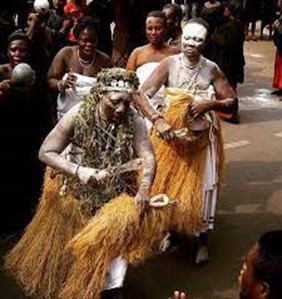
Rebecca L. Anne-Davis
Mediated girlhoods in an age of religious pluralism: A blended ethnography among teen girls in Germany and the Netherlands

This project is done in cooperation with the graduate school, “Regional Regulation of Religious Plurality in Comparison" (Regionale Regulierung religiöser Pluralität im Vergleich, RePliV), the Center for Religion and Modernity (CRM) at the University of Münster, and the Center for Religious Studies (CERES) at the Ruhr University Bochum.
This project explores how religious pluralism is lived as a teen girl in a Western European context while taking into consideration the elevated role of social media within adolescents’ daily lives. I delve into how female identifying students from international high schools in Germany and the Netherlands navigate and self-regulate concepts of religious pluralism and secularism in their online and offline lives. Rather than immediately focusing on one specific faith background, this project is constructed in such a way that allows for occurring faith practices among the girls to take precedence. This project focuses on teen girls’ encounters with other religious and moral worldviews as held within the secular containers of an international high school and social media platforms. It also investigates themes of internationalization in regard to religious pluralism and secularization theories.
The following research questions will be explored through ethnographic fieldwork and participant observation: How do these female youth go about their religious upbringing and how do they position themselves under the following conditions: family background, religious involvement, social media participation, and integration in a ‘secular’ container of an international high school with relatively high religious diversity? How do relationships and interactions both online and offline in their respective spiritual environment on the one hand, and with peers with different spiritual proclivities on the other hand, influence the processes of their moral and spiritual development? In what ways are they self-regulating their faith experiences as well as interactions with people of various faith backgrounds? In what ways do they experience regulation and mediation of their own faith experience within a ‘secular’ society?
This study finds itself at the intersection of sociology and anthropology of religion and girlhood studies. This project places emphasis on inter- and trans-disciplinary dialogue around religious youth, religious pluralism, secularism, self-regulation, religious morality, digital religious practices, internationalization of religion, and how gender touches all of these concepts. It pulls from theories of religious pluralism, secularization, internationalization, religious authority, morality, agency, self-surveillance and regulation, as well as gender identity. This project is based upon feminist and ethnographic research methodologies which highlight the importance of reflexivity and recognizes that there is no such thing as pure objectivity within design or analysis. Understanding this, I work with awareness for my own influence, privilege, and authority in order to immerse myself in the world of the participants in order to construct a storied reality.
Binesh Balan
The Coming of Theyyam: A Comparative Ethnographic Observation on Theyyam Performing Rituals among Mavilan Tribes and Their Neighboring Communities in Southern India.
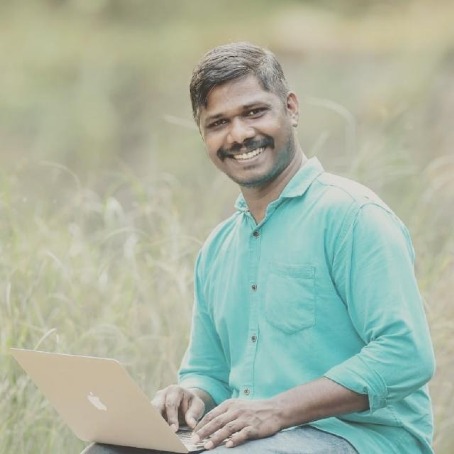
This research constitutes a comparative ethnographic study on Theyyam performing rituals among the Mavilan tribes and their neighboring communities in South India. Previous studies on Mavilan communities, focusing on cultural and oral tradition approaches, often emphasized historical and folklore aspects rather than anthropological inquiry. While limited ethnographic studies exist on Theyyam performing rituals and the oral tradition of the Tulu-speaking Mavilans in the Kasaragod region, anthropological attention on the Markodi-speaking Mavilans has been uneven, and certain areas in the neighboring districts remain largely understudied. This research aims to conduct an extensive study on Theyyam performing rituals, while also exploring the role and meaning of thottam songs and their relation to the concepts of ‘Theyyam,’ ‘anangu,’ and ‘maya'.
Part of the Institute of Indian Studies
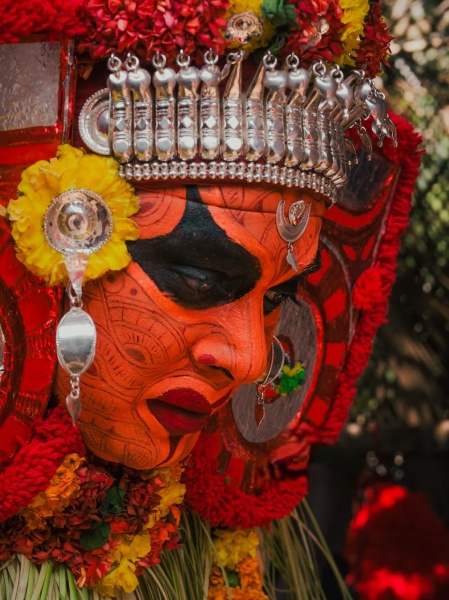
Franzisca Bos-Beeken
Inclusivity in Public Participation Approaches: The impact of Secularism on Notions of Active (Energy) Citizenship
In collaboration with the department of Energy Law of the University of Groningen and the Municipality of Groningen, this research examines the impact of secularism on notions of active (energy) citizenship, aiming to contribute to the design of more inclusive and representative public participation approaches.
It is no secret that climate change is a global problem that requires immediate and sustained action. We must reduce greenhouse gas emissions and adapt to the changes that are already happening. This requires a focus on both climate adaptation and mitigation strategies. Over the years, it has become evident that these strategies cannot be successful by only focusing on purely technological solutions. The notion that the climate crisis is not a purely technocratic crisis but also a social one has become well embedded not only in academia but also in the practical world. Like Vice-President of the European Commission Frans Timmermans (2020) said in the context of the European Green Deal debate:
“It must be a just transition, or there just won’t be a transition.”
In this spirit, notions of ‘just transition’, ‘effective public participation’, ‘leaving no one behind’, ‘energy citizenship’, ‘energy democracy’, ‘energy justice’ and ‘urban democracy’ have become deeply embedded in the discourse around the transition towards climate neutrality. There is an established but ever-growing awareness about the role citizens (can) play in shaping a sustainable future, the importance of encouraging them to take personal responsibility for their own energy consumption and carbon footprint, and the need to actively engage them in shaping policy and governance. Over the years, this notion of public participation has also become embedded in international, European and national law, i.e. the 1992 Rio Declaration, the Aarhus Convention and the European Green Deal.
Despite their growing popularity, though, these terms lack a unified definition. They are in danger of becoming simple ‘buzz words’ that are being used as boxes to tick to justify actions, policies, and secure funding. Consequently, current approaches towards citizen engagement remain inadequate. They mainly target small sections of society, which are often referred to as the ‘usual suspects’ and are at risk of transforming into a ‘gated democracy’ (Agger 2012).
To derive at more inclusive forms of informal political participation, more knowledge must be gained about who does and does not participate and how they participate. This is vital, because as Sprain (2016, 67) warns: “Done poorly, participation can result in undemocratic outcomes.” This argumentation is closely related to the issue of representation. While participatory processes may create democratic ownership for a group of resourceful citizens, it is in danger of alienating those less resourceful (i.e. people with low level of education, low income, immigrants, ethnic minorities and/or young people).
Recent scholarship has already established the importance of drawing attention to the existential meaning-making ontologies and frameworks in policy, practice, and research, including simplistic and reductionist ideas about the distinction between ‘religion’ and ‘secularism’. These have led to both the marginalization and exclusion of organizations and communities that are crucial to transformational processes such as the transition towards a just climate future.
Shilanjani Bhattacharyya
Socio-cultural dynamics of the resurgence of millets among Adivasi shifting cultivators in Odisha, India
Shilanjani Bhattacharyya completed a B.A. in Social Sciences and an M.A. in Women’s Studies at the Tata Institute of Social Sciences, India, and is currently a PhD student at the Faculty of Religion, Culture and Society. For her master’s research, Shilanjani studied the everyday experiences of spirituality among women ‘Bauls’ of Bengal in eastern India, who dissent against heteronormative orthodox religion and its associated discriminatory practices through songs and esoteric rituals. Shilanjani has also worked with the Tata Trusts and the Ministry of Women and Child Development of the Government of India facilitating the implementation of the National Nutrition Mission.
As a joint PhD student with the University of Groningen and Goethe University Frankfurt, Germany, Shilanjani explores the socio-cultural dynamics of the resurgence of ‘millets’ in Odisha, India by focusing on certain adivasi (indigenous) communities of shifting cultivators who continue to engage with millets for subsistence, exchange, and ritual practices, despite its marked decline in the wider population. The project tries to ethnographically understand how millets are emerging as actors of continuity and change that contribute to significant cultural transformation among adivasi communities, especially in the realms of social organization, labour relations, cosmological ideas, and religious practices. The research particularly interrogates how adivasi religious institutions get imbricated in the cultivation processes of millets and inflect adivasi worldviews in the face of various changes in the processes of production, distribution, and exchange of millets. The research situates and analyzes how religious norms and practices are reflected in the everydayness of adivasi life, especially in their attempts to negotiate with and work through significant changes in state policy as well as broader socio-economic conditions in eastern India.
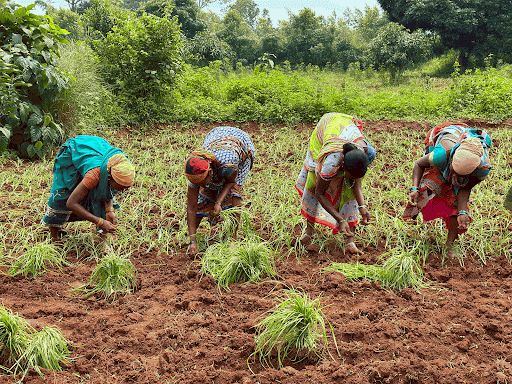
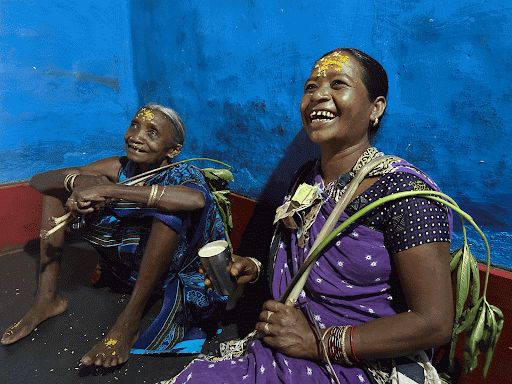
Fardo Eringa
‘Michaeling’: the way towards experiencing the sacred and cultivating an ethical self
On 25 June 2009, the eve of his come-back tour, Michael Jackson (MJ) died, triggering a global outpouring of grief. In the aftermath of Jackson’s passing, ‘Michaeling’ originated, a pilgrimage dedicated to MJ, which allowed fans to cope with their loss and express their dedication.
This project takes ‘Michaeling’ as a case study to investigate how sacred forms are created out of popular culture that are constitutive and formative of meaningful, moral lives. Contrary to persistent characterizations of fans as ‘superficial’, ‘weak’ and without agency, the fandom of MJ-pilgrims is complex: MJ-pilgrims are conscious agents, who actively engage with the artistic and humanitarian legacy of MJ to shape their worldview and cultivate an ethical self.
In this research, I particularly focus on the reflexive power of popular music and the significance of embodied practices, studying pilgrimage and ritual as ‘lived religion’. Present theories on pilgrimage provide a framework to reflect on the pilgrims’ experience and vice versa. Introducing the field of popular fan culture as thé place which leads to day-to-day meaning-making of contemporary people, the study of MJ-pilgrims has the potential to inform broader concepts of religion and the sacred and to complement the understanding of our religious’ present.
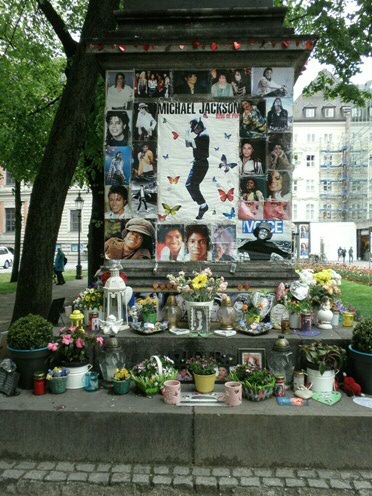
Sven Gins
Homo Imperfectus: Animals, Machines, and the Quest for Humanity in Late Mediaeval France
What insights does fifteenth-century Burgundy offer for present-day discussions about humankind’s systematic exploitation of nature, the rapid development of artificial intelligences, and the attribution of legal subjectivity to (nonhuman) animals? In those days, too, people sought answers to the ethical and existential questions that these debates provoke. I therefore analyse how mediaeval Christians engaged with biological and mechanical animals, and what this suggests about how humans defined what it means to be human. I do so by looking at three ideologically interconnected themes: encyclopaedias, artificial animals, and the legal prosecution of nonhuman animals.
Mediaeval encyclopaedias, based on classical knowledge of zoology and Christian prescriptions, are compendia about Creation that readers could utilise to fathom God’s plan for humankind. Animals were therefore described in terms of their potential role in the development of humanity: as food, draught animal, moral symbol, or medicine. I consider these discourses of animality to be prescriptive: encyclopaedias thus naturalised human expectations of animals and, because of their emphasis on the inferiority and nonhumanity of animals, they also articulated norms for humans. This way, people who ostensibly diverged from these norms could be represented as ‘inhuman’. These rhetorics are still often invoked to subjugate animals and human minorities. I therefore deconstruct such discourses to destabilise their present self-evidence.
The aforementioned expectations of animals are explicitly visible in human reproductions of animals in mechanical form. For instance, the dukes of Burgundy installed all kinds of artificial animals at their estate in Hesdin to awe and frighten European aristocrats. Because of their resemblance to biological animals, artificial animals provoked similar questions as the artificial intelligences that are presently developed. Is an organism no more than the sum of its parts? Does humankind have such an intrinsic understanding of the natural world that we can play for God now as well? What position do artificial intelligences occupy in the order of Creation, and can they dethrone their human creators? These questions, now more urgent than ever, play a prominent role in my project.
The self-evidence of human superiority was undermined when biological animals diverged from the—humanly prescribed—expectational pattern, like when a wandering pig killed a human infant. Valois-Burgundy was the epicentre of numerous secular and ecclesiastical ‘animal trials’ that were organised in Western Europe for many centuries as a reaction to such transgressions of God’s earthly hierarchy. To which extent were these trials social laboratories where everyday modes of sociality between humans and animals could be reinvented and re-naturalised?
Each of these themes suggests an interest in defining, subjugating, and controlling the natural world. These assumptions about the relation between humans, animals, and robots are still normative in the present, religiously diversified and secularised world because of Valois-Burgundy’s enormous impact on the intellectual and sociocultural development of Western Europe. My analysis of the aforementioned themes will deconstruct human forms of oppression and highlight how anthropocentrism harms both animals and humans, and how it hinders us from building sustainable and mutualistic rapports with other organisms.
This project is funded by the Dutch Research Council (NWO) and the University of Groningen via the Research Programme PhDs in the Humanities ( PGW.21.029 ) for talented researchers.
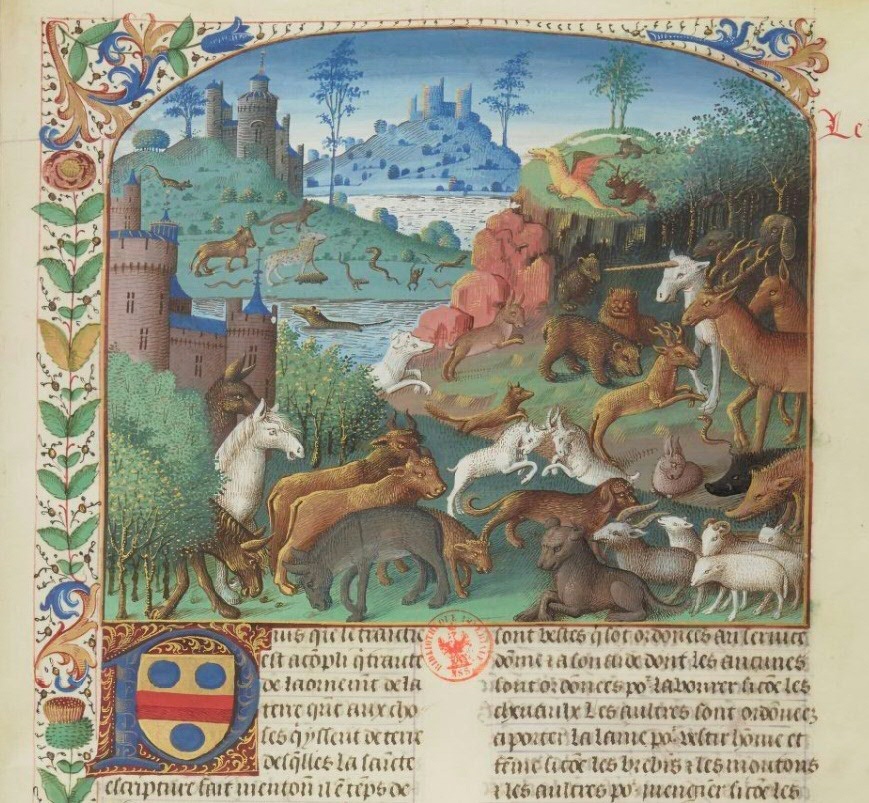
Mary Graham
Using ethnographic methods and a combined phenomenological and lived-religion approach, I am exploring how the act of listening to a esoteric Christian liturgy leads to the experience of what gets characterised as God, or the divine, within oneself. The focus on the experience of the divine within - and the listening practice that leads to it - are based upon a spiritual understanding of the human being that will be analysed in the research project, yielding a discussion centred on - and expanding - the concept of relational subjectivity. Respondents' experiences during the Eucharist ritual will be understood with the aid of an in-depth literature analysis from out of the movement itself, and framed in relevant concepts gained from other ethnographic work on prayer and subjectivity.
Leonel Hernández Polo
Vital Life Experiences and Future Aspirations
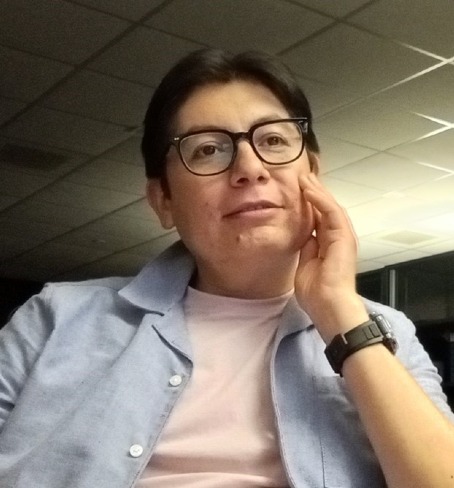
The general aim of this PhD project is to understand how second-generation Mexican immigrants configure their future aspirations in the United States identifying the vital life experiences (vital chances) what define the access or not access to higher education. This includes analyzing how their biographies, social and cultural contexts, family backgrounds and the socioeconomic disadvantages impact their aspirations for the future. Based on the argument that future aspirations’ construction is considered as a capability, the main objective is to understand how their aspirations and the capabilities to aspire are constructed and developed.
Due to the fact Second-Generation are considered as immigrants, even though they were born in the United States, they are faced with different social and structural inequalities hard to overcome. In this research it is important to understand what kind of discrimination, segregation and barriers may be limiting their capability to aspire and how these challenges can lead to feelings of frustration, failure, or guilt when their aspirations are not realized or were frustrated. Studying the experiences of who have successfully entered tertiary education can provide valuable role models and inspiration for young people aspiring to pursue higher education in the US.
Supervisor: Dr. Julia Martínez-Ariño
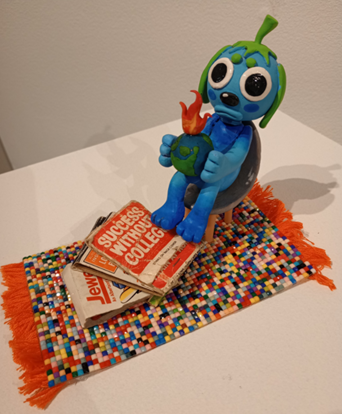
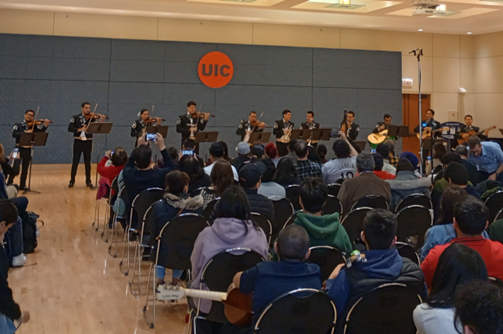
Tanja van Hummel
The Sacred Dimensions of Climate-Induced Conflicts
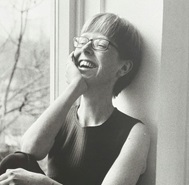
Rapid climate change, the quick alternation of the average weather type over a given period of time poses local, national and international security risk. Although everyone is affected by climate change, the biggest impact is on people who depend on their environment for their livelihoods and often consider this nature as sacred.
This PhD project investigates how spirituality and worldview influences how protesting farmers in the Netherlands make sense of climate change and climate-induced conflicts. The view on the sacred ty affects almost every aspect of live, including the relationship with the environment. Because the environment farmers live in is changing due to climate change and environmental policies, these farmers experience a conflict between their way of life and the way of life the government is imposing. This results in protests, which is an instance of a climate-induced conflict.
Countries implement strategies aimed at climate resilience to reduce the security risk. These strategies, and their underlying theories, are secular and positivist, thus result in technological, economic, humanitarian or military responses to climate change and related conflicts.
While these approaches are useful, they do not consider the spirituality of the communities. Consequently, the strategies and solutions emanating from the approaches may not be accepted by these communities, thus are unsustainable. Hence, there is a need for further theorization and conceptualization of climate-induced conflicts towards climate-proof peace and security.

Otto Samuel Knottnerus
The land of Canaan bordering the North Sea – Exploring the history of mentalities in a (former) wetland civilization
The Wadden Sea – a major natural World Heritage Site on the southern shores of the North Sea – is bordered by an extensive series of fertile coastal marshes, which stand out because of their distinctive cultural heritage. Major parts of this heritage are considered to be Frisian.
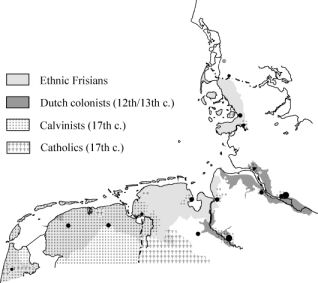
The coastal marshlands covers an area of about 10.000 km2, stretching about 500 km from Den Helder (The Netherlands) to Blåvandshuk north of Esbjerg (Denmark), and reaching upstream along the Elbe and Weser Rivers to the cities of Hamburg and Bremen (Germany). The area has been relatively densely populated since prehistoric times as compared to its hinterland; its inhabitants were rather wealthy and oriented to international commerce and urban culture.
Our studies focus on cultural, social and religious developments since end of the Middle Ages. They start from the assumption of a common history, transcending national boundaries, its outlines being based on a shared cultural heritage and comparable ecological, agricultural and geopolitical dynamics. Shared traits and parallel developments are studied in order to explain converging and diverging tendencies within the area’s cultural heritage, especially between largely Calvinist districts in the West and Lutheran districts to the East.
The first part of the book deals with the entire area and its long-term history. Here the author draws on a stratified model of explanation, focussing on the interaction between environmental conditions, socio-political arrangements and religio-cultural patterns. The remaining chapters aim at specific subregions, in order to identify specific factors causing divergent tendencies within the area. Part two deals with the Early Modern Age, especially the impact of increasing exchange between rural and urban areas during the Renaissance end the Reformation. Part three concentrates on the late 18th, 19th and early 20th centuries, when successive phases of rural modernization had a profound impact on social structures and cultural values, eventually leading to the ongoing dissolution of the area’s common heritage.
All studies are characterized by a transdisciplinary approach, not only reflecting the author’s indebtedness to divergent disciplines such as historical anthropology, sociology and geography, cultural history as well as folklore studies, but also his involvement in public discussions concerning the cultural heritage of the Wadden Sea Area. It can be read as a plea for an integrated history, transcending the limitations of evolutionary theories and post-structuralist critique, and leading to a revaluation of immanent explanation as against ahistorical transcendental models.
Promoter: prof. dr. Y.B. Kuiper
Roberto Jones
The Art Politics of Transmutation

Alchemy refers to an esoteric discourse that blends elements of philosophy, spirituality, and proto-scientific inquiry concerned with the transformation of substances and the refinement of both matter and spirit. Alchemical discourses usually focus on the transmutation of base metals, like lead, into noble metals, such as gold, but this process is often seen as symbolic of a more profound, inner transformation - the refinement of the human soul. Transmutation is metamorphosis; a complete change of nature. It is a process that fosters meta-awareness, helping individuals come to terms with both their internal landscapes and the social realities they inhabit.
The concept of art politics of transmutation emerges from this symbolic understanding of alchemy. It refers to the ways in which contemporary art engages in transforming socio-political, cultural, and ideological spheres through its visual, symbolic, and material practices. This transmutation in art occurs by challenging its audience’s preconceptions and judgments, marking the art not only as esoteric but also as political. I argue that contemporary art operates not merely as an aesthetic experience but as a critical platform where complex socio-political and esoteric discourses intersect. This investigation explores how contemporary art renders discourses from Esotericism Studies and Critical Posthumanities to enact transformative processes in our postindustrial, deconstructed reality. Through this discursive engagement, contemporary art has become a space where power, identity, and anthropocentrism are questioned and reimagined. By examining the works of artists such as Matthew Barney (b. 1967), Marina Abramović (b. 1946), and Bill Viola (1951-2024) as specific objects of study, this research navigates the profound ways in which contemporary art can serve as both a reflection and catalyst for political change.
Main Promoters: Prof. Dr. Kocku von Stuckrad & Dr. Blanca Estela Solares Altamirano
Ashutosh Kumar
Contextualizing millets in the social and cultural life of the Didayi of Odisha, India
Ashutosh Kumar is a PhD candidate in the NWO project titled “Salvage crop, “Savage” people”, at the Institute of Indian Studies in the faculty of Religion, Culture and Society. He has worked with the Oraon and Kondh Adivasi of Jharkhand and Odisha in India for more than 8 years. His engagement with the Adivasi communities enabled him to observe that their lives were woven around agriculture. However, the rapid change in agriculture management and technology in the given developmental regimes has reshaped the community's everyday lives. His observation made him focus on the transformation of labour practices, seed saving and usage, and food security in the communities.
His current engagement in his PhD project is with the Didayi of Odisha, India. Didayi are shifting cultivators and grow various kinds of cereal crops, among them various millets, on their swiddens which have served as a staple cereal for generations. Despite being an important cereal for the Didayi and many other Adivasi communities it has been only recently that the focus of policy makers has shifted towards millets. In the last two decades, millet has been widely studied for its nutritional and environmental properties. This has resulted in the revival and promotion of millet by various governments, including Odisha. However, there is no investigation into how the Didayi cultivate millets or what role these millets crops play in the social and cultural life of the community. With the ethnographic study of the Didayi Ashutosh aims to examine the role of millets as a social and cultural resource. At the same time, he will also reflect on the impact of the revival of millets on the social and cultural life of Didayi.
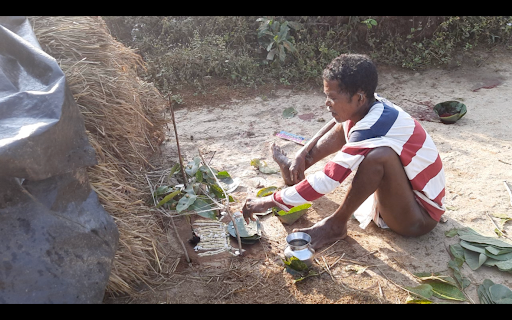
Stefan Mekiffer
Shamanic Healing and Strategies for its Ontological Rationalisation by Practitioners in Contemporary Europe
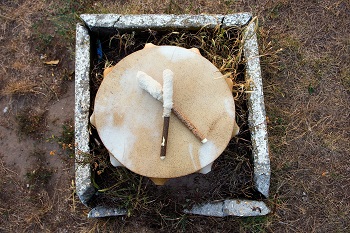
My research is about the metaphysical concepts that contemporary shamanic practitioners adhere to. More specifically, I would like to find out how shamanic practitioners understand spirits and the role they play in the shamanic healing sessions that are today being offered throughout Europe.
While most shamanic practitioners claim that it is not them but the spirits who perform the healing, it is not always clear what precisely this entails. Are spirits conceived to be purely psychological phenomena, or are they assumed to exist independently from the observer and have agency on their own? Which roles and limits in the healing process are they assigned to? How are spiritual entities understood to conduct physical healing interventions? What epistemological status is knowledge of them considered to have? Which ontological premises do these explanations entail?
Answers to these and other questions are collected from interviews with and monographs by practitioners, and I intend to structure and compare them to spirit conceptions from the history of European thought. How have previous thinkers dealt with these questions, and how do contemporary practitioners refer to their approaches? This way I hope to get a more coherent picture of this rapidly evolving set of spiritual techniques and the way it relates to European traditions.
Langton Muchenjekwa
Religion and Reconciliation: The Case of the Gukurahundi Massacre in Zimbabwe
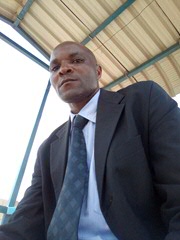
The study seeks to explore the problem of the lack of appropriate formulation and implementation of the reconciliation process in addressing the Gukurahundi massacre in Zimbabwe. It will do this by focusing on how religion (Christianity and African Religion, respectively) can be mobilised to facilitate apology and forgiveness as conditions necessary for reconciliation in Zimbabwe.
Ada Ruis
Syrische vluchtelinggezinnen in Nederland. De betekenis van gezinsrelaties en omgeving bij het bouwen aan een nieuw thuis.
In dit onderzoek worden Syrische vluchtelinggezinnen gevolgd gedurende de periode dat zij een tijdelijke verblijfsvergunning hebben (5 jaar). De gezinnen komen uit verschillende plaatsen in Syrië, en zijn alle moslim. Onderzocht wordt hoe de gezinnen erin slagen een leven op te bouwen in Nederland, hoe verleden en heden hun toekomstverwachtingen en keuzes beïnvloeden, en welke rol (veranderende) relaties tussen ouders en kinderen in dit proces hebben. Het betreft een etnografisch onderzoek, met een accent op biografische perspectieven. Het volgen van een beperkt aantal gezinnen over langere tijd biedt inzicht in hoe verschillende gezinsleden zich ontwikkelen, in het licht van een onzekere toekomst en toenemende discussie over vluchtelingenbeleid en over de plaats van de islam in de Nederlandse samenleving.
Sujin Rosie
Toegankelijke en bereikbare zorg voor zingeving in de thuissituatie
Mijn kwalitatieve onderzoek beoogt bij te dragen aan toegankelijke en bereikbare zorg voor zingeving in Nederland. In de Nederlandse samenleving is overheidsbeleid gericht op participatie. Mensen die minder participeren, bijvoorbeeld op het terrein van onderwijs, betaald werk, gezondheid en wonen, worden op basis van hun objectieve leefsituatie gesignaleerd als kwetsbare doelgroepen die ondersteuning behoeven.
Naast hulp bij de objectieve leefsituatie, is er ook aandacht voor de subjectieve waardering van het leven. Zingeving speelt hier een belangrijke rol. Van professionals en vrijwilligers wordt gevraagd om hier aandacht voor te hebben. Inderdaad schuilt er onder de objectieve leefsituatie soms ook een behoefte aan zorg voor zingeving. Nu bestaat hulp op het gebied van zingeving al, maar deze bereikt niet iedereen.
Ik zal onderzoeken welk soort differentiatie helpend is tussen cliënten, professionals en vrijwilligers om de toegankelijkheid en bereikbaarheid van zorg voor zingeving te verbeteren. Hierbij focus ik me op contexten/doelgroepen, zorgrollen en zingevingsdimensies of -lagen, en de mate waarin ontwikkelde interventies/producten toegankelijk zijn voor mensen die moeite hebben met lezen, schrijven en/of rekenen.
Onderzoeksmethoden zijn (duo-) interviews, focusgroepen, document- en literatuuronderzoek en vergelijkingsonderzoek.
Meer informatie op mijn research profiel en op de website van Kenniswerkplaats Zingeving.
Supervisors: prof.dr. Hanneke Muthert, dr. Erik Olsman, dr. Anja Visser
Contact: x.j.s.rosie rug.nl
Reinhardt Stiehle
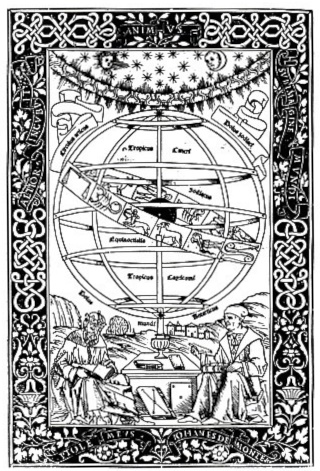
sphere (Venice 1496)
The Zodiac was created in Mesopotamia around 500 BC and became an integral part of astronomy and astrology. Due to the rotation of the Earth’s axis, the constellations no longer lie in the zodiacal signs of the same name. Today we speak of the tropical zodiac, which begins at the vernal equinox, and the sidereal zodiac, which begins at zero degrees of the constellation Aries. In astrological practice, both forms are used, accompanied by a lively discourse as to which variant is ‘correct.’ In my research, I am investigating whether the zodiac was originally tropical or sidereal, and under what conditions paradigm shifts occurred.
From Mesopotamia, the zodiac spread to neighboring regions and from there over the centuries to the present. What socio-cultural and religious preconditions does the zodiac encounter in the transfer of knowledge in different cultural areas? How do temporal and regional differences influence the formation of knowledge? Which mediators shaped the discourses and thus the nature of adaptation?
I will answer these and other questions from the perspective of historical discourse analysis. To this end, both astronomical and astrological source texts will be consulted, as both disciplines played a decisive role in the construction of the discourses in each epoch. In this way, I hope to classify contemporary perceptions of the zodiac and uncover any myths that may exist.
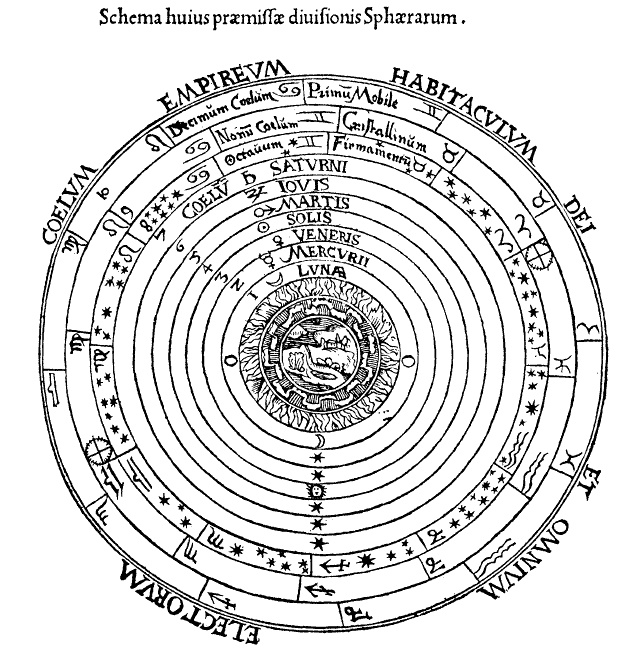
Nidhi Trivedi
Between continuity and change - An ethnographic study of the Parenga Poraja and their relation with staple cereals
Nidhi Trivedi is a PhD researcher at the Faculty of Religion, Culture, and Society. She holds a bachelor's degree in social work from the College of Social Work, Nirmala Niketan, Mumbai, and a Master of Arts in Development Studies from Azim Premji University, Bengaluru. Nidhi gained valuable experience working with the Munda, Oraon, and Khadiya Advasis (Indigenous people) of Jharkhand. In the NWO-funded project "Salvage crop, ‘Savage’ people," her sub-project focuses on the Parenga Poraja, an Adivasi community in Koraput, Odisha, who are primarily engaged in rice and millet cultivation. Her doctoral research aims to study how millets and rice are embedded in the community and their life worlds, as well as how they relate and respond to the changing valuations of cereal crops in the current socioeconomic and cultural environment. Additionally, she examines the effects of the ongoing millets revival strategies in India on traditional farming practices. She further investigates how diverse local knowledge systems are shared and transferred intergenerationally while exploring multidimensional changes in the lives of Parenga Poraja. By analyzing local practices, ideas, worldviews, and choices, her study hopes to identify the role of cultural diversity in preserving biodiversity.
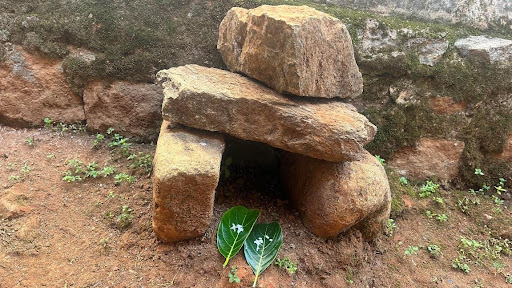
Welmoed Wagenaar
The everyday life of media fans: ritual and sacralization in online media fandom
Every time a new medium appears, it causes concern about its impact on people’s lives. Today, this concern revolves around our constant involvement in digital media, raising doubts about whether such involvement enriches our lives or causes us to disconnect from ‘real’ world matters and relationships. One way to study this issue is by looking at media fandom. Mobile devices and social media platforms like Tumblr and Archive of Our Own have made it possible to engage in new, consuming ways with the fictional worlds of for example Sherlock Holmes, Harry Potter, or Star Wars. Fans for whom these worlds and characters are important can spend hours a week, or even hours a day in online environments, engaged with fictional matters.
This project examines the topic of online fandom from a new angle. It focuses on media fans: people who are emotionally invested in a mediated element of popular culture (here restricted to fictional books, films, series or games) and who, because of that investment, engage in the regular consumption of said media. Often, these fans routinely gather online to discuss, explore and expand their favorite story worlds via forum posts, blog entries, and fan works such as fan art or fanfiction. With regard to such practices, fictional worlds have been described as playgrounds or symbolic resources that allow people to reflect on how the real world is, could be, or should be. This would offer the potential for people to instigate personal, cultural, or social change. But is this really the case?
Existing research on media fandom focuses primarily on online fan cultures and practices to study the potential of fandom as changemaker. This overlooks significant dimensions of how fictional worlds become meaningful to people’s actual day-to-day lives and makes it difficult to grasp the complex interactions between fans' lived reality, the online fan activities they engage in, and the fictional worlds central to those activities. In an attempt to cover this gap, this project explores a new approach using ritual theory. For decades, ritual scholars have been studying the relations between different realities (ritual/non-ritual, religious/non-religious, sacred/profane). Ritual performance in this context has been theorized as a process that produces boundaries or ‘frames’: contextual delimitations that communicate what kind of reality we are dealing with. Specifically, the act of ritual framing can set objects, spaces or practices apart as something special, giving them ‘sacred’ value. This sacrality subsequently contributes to the creation of shared social realities and shapes people's lives.
By means of participant observation, diaries, and in-depth interviews, this project investigates media fans’ practices and experiences surrounding fictional worlds. How do fans relate fictional worlds to everyday life, and what role do online fan spaces play in this process? How can theory on ritual framing and sacralization help understand this issue? The aims of the research are to develop a new framework for studying the interaction between fiction and everyday life, to gain a deeper understanding of the cultural significance of media fandom, and to advance ritual theory building.
If you want to view previous PhD research, visit our archive.
| Last modified: | 17 March 2025 2.36 p.m. |
